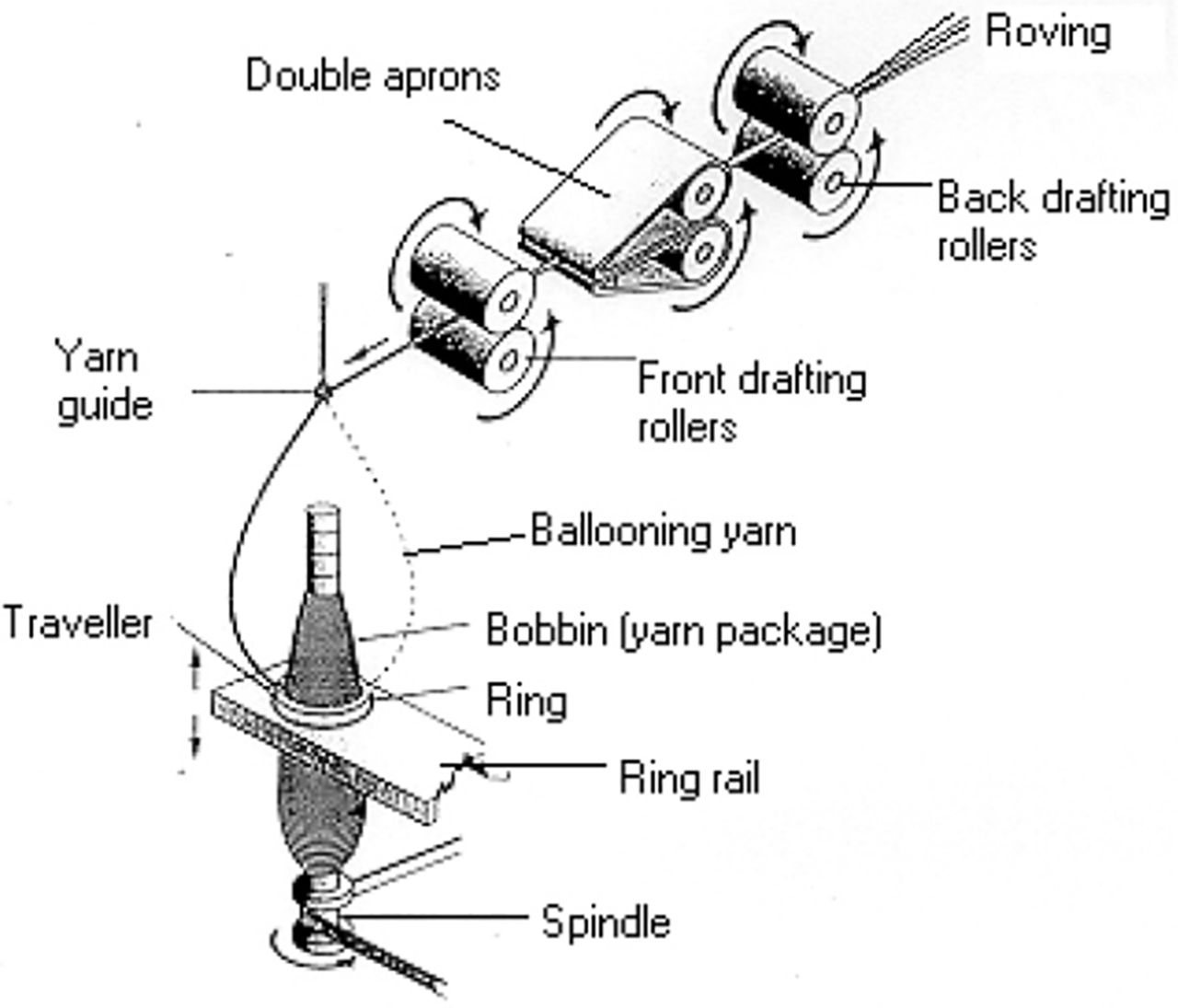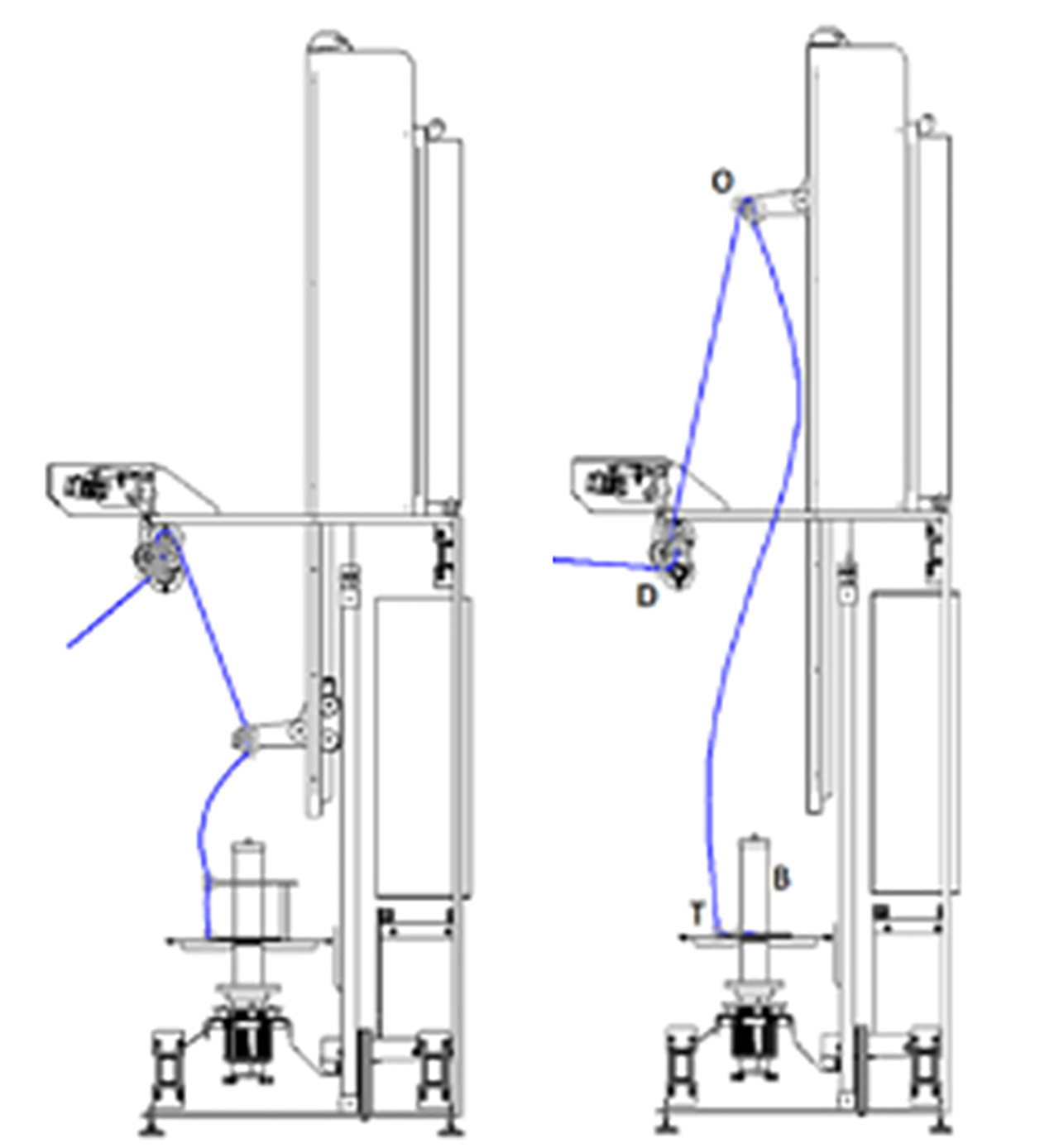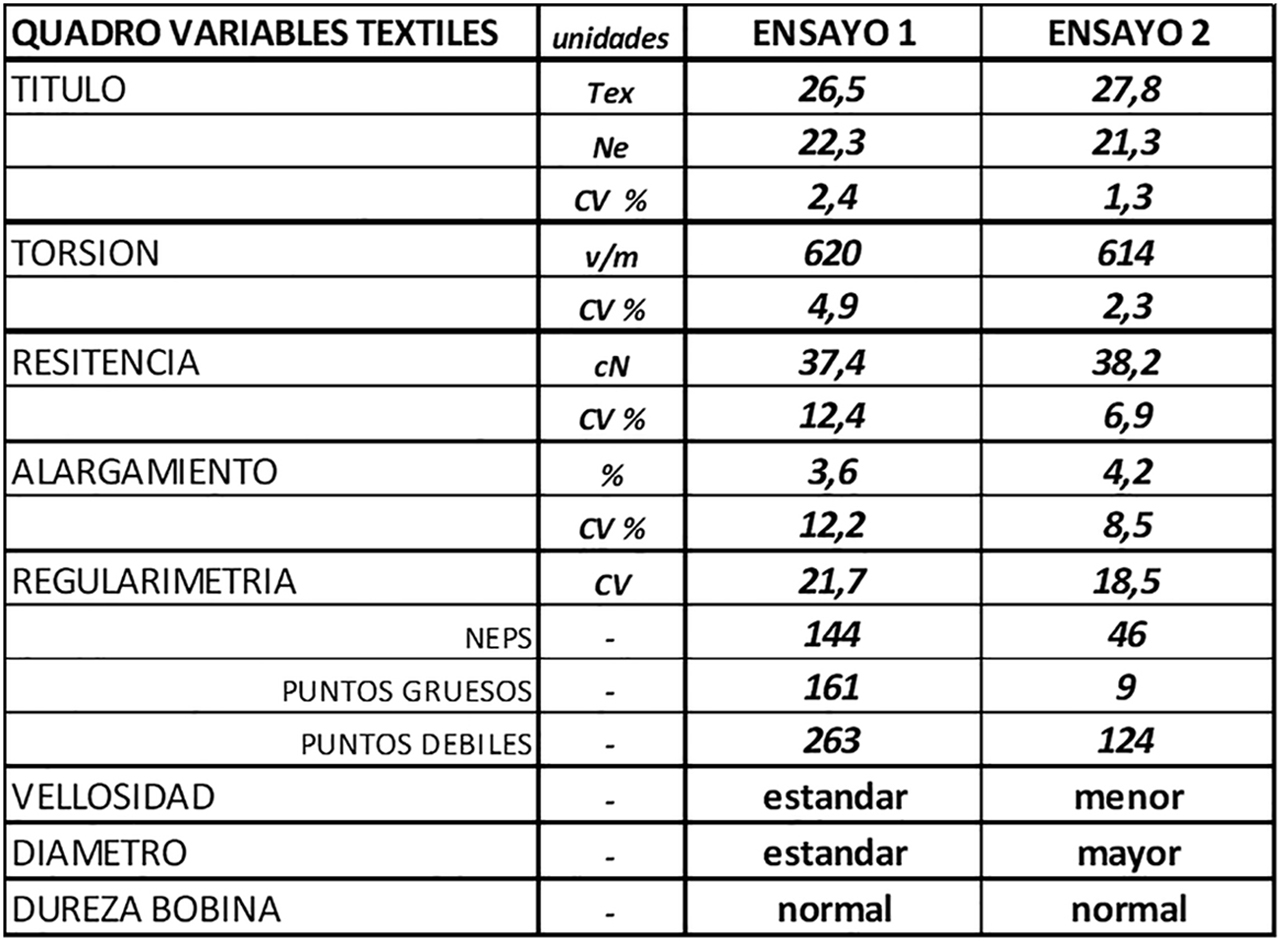For: Ing. Albert Galan, Ing. Jordi Galan, Ing. Josep Latorre
( 1 Textile engineer, PhD in progress UPC. 2 Engineer mechanic UPC. 3 Textile engineer UPC )
Abstract
The obsession with reducing the ball in ring spinning is one of the major concerns of technicians to increase the production of machines trying to reduce the limits of friction between yarn, traveler and ring. The new Spinhole spinning system It breaks with the proportionality paradigm of the increase of the balloon with the increase of speed of the spindle, being able to spin at more spindle speed without increasing the weight of the traveler, with less energy consumption. In this work it develops the spinning to multiple balloon modeling the phenomenon and compared the experimental part on a prototype, the yarn
Keywords: Balloon spinning, ring, traveler, multiple balloon.
1. Introduction
Ring spinning is one of the oldest ones that exist with a very advanced technological level, but with few revolutionary innovations. The principle of ring spinning is described in Fig. 1. a bundle of fibers that comes from the sliver is stretched and organize in parallel fibers with the drafting system where it comes out on the last roller with the fibers in section necessary to obtain the desired count.

2. Description of the new system of spinning SPINHOLE to multiple balloons
The FIG. 3 and 4 show the diagrams compared to the operation of spinning or conventional ring twisting technologies to a single balloon and the Spinhole system with multiple balloons.

It has been observed that by increasing the height of the guide and reducing the weight of the traveler, achieve to spin at multiple balls. This is the key combination for the operation of this technology. Instead of reducing the balloon, you can work on a free balloon. This phenomenon occurs when the balloon grows so much because of the high speeds that if it has space by the upper part “breaks” the balloon and passes to the state of two balloons. It is a self-balancing of physical forces that are analyzed in the following section.
3. Experimental results obtained compared between the traditional and multiballoon system
Increased production and reduced working tension. Quantitative analysis.
There is an increase in production of + 56% with a traveler weight of 78% lower. This increase has been produced by passing 16,000 rpm of the spindle at a speed of 25,000 rpm in the case of multiple balloons. During the spinning of the bobbin in Test No. 6, it has been observed that there have been no breaks and the final coil has an adequate hardness. In the later sections we analyze more aspects about the quality of the yarn obtained and its compared with a market thread.
2.2.5. Summary table between test textile variables Analyzed

1. Conclusions
The results obtained have been very satisfactory. It has been Developed a graphic model That responds to the new phenomenon of spinning rings to multiple balloons, where you can analyze the number of balloons, the amplitude and length of these and the tension.
It has also been built a test prototype from a spinning lab machine that allows you to obtain threads A single balloon and Multiple balloons, getting the following results:
• Increase in production speed of 56% in 100% cotton yarns Ne 24 to 665 tpm.
• Reduction by 78% The weight of the traveler in the ring, which implies an energy saving of between 20 and 40% lower.
The results obtained have been compared qualitatively according to the most usual tests of the spinning industry, obtaining the following results in the multiple ball threads:
• 50% more regular in count number and torsion
• Very slightly higher in tenacity and 17% more elastic and regular.
• Two points better in mass regularity (CV) and a notable improvement in the reduction of coarse points by 94% lower, weak points 47% lower and NEPs 32% lower.
• Better final appearance, spongier, less fuzzy, with greater diameter of the yarn, especially interesting in the sector of the knitwear by obtaining more fluffy threads with the same number of fibers in section.
Regarding the viability of the multi-balloon spinning system, we can conclude that
• The technical viability of the system is acceptable, being possible the manufacture of new machines with the SPINHOLE system.
• Energy viability is feasible with a reduction in electricity consumption of 31%.
• The commercial viability of machine manufacturing with the new system is possible.
About the implementation of the system in the textile industry, it should be taken into consideration that there are two possibilities of introducing technology to the market:
• Manufacturing New Machines: You get a reduction of 56% of the investment in Spinning machines. and an energy saving of 20%.
• Retrofitting existing machines: obtains an annual energy saving of the order of 31% without unbalanced production lines, producing at the same spindle speed. With investment returns about 2 years of return of investment ROI of 50%.
Without any doubt we are faced with a paradigm that has transformed and revolutionized the ring spinning sector. The laws accepted for years have been shattered on the balloon-ring-cursor theory, which determined that at more spindle speed more balloon. There is a need for a thorough review of all studies in this respect which, with this phenomenon, are no longer valid. The limits in the spinning process were the speed of the traveler in the ring which was limited to 40 m/s. Now we can probably get to 80 m/s. New travelers must be designed with new materials, and in this way look for what is the new limitation or “bottleneck” of ring spinning. The perturbations of stationary state solutions will have to be studied. We’d have to see when we’re going to have a non-stable change of balloon during the spinning and filling process of the bobbin.
—
1 Spinhole is a Patent Co-property TWISTPERFECT, S.L. For more information: + 34 610 417 861, or albert@twistperfect.com
2 Return on Investment or Pay Back, is the period in years in which an investment returns the invested capital, 3 Return Of Investment is the annual% return of an investment